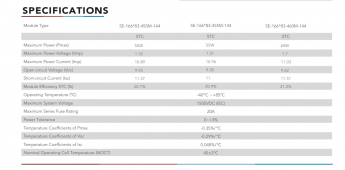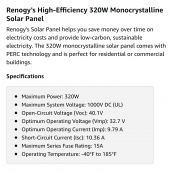KolobSolar
New Member
Crosspost from all-in-one
I have the Growatt SPF 3000TL LVM-24P which I just purchased. I’m strictly off-grid and feed it with 4x100w Renogy panels. I store in 4 x 6v400ah (24v/400ah) Centennial AGM L16’s in series. I have a battery balancer on the 4 cells. My non-occupied load is 55 watts 120v AC constant rate. Starlink and security cams.
It’s monsoon season and afternoons are cloudy. There is theoretically 14 hrs of sun per day at my latitude right now. Batteries go to 25 % SOC overnight and struggle to get to 100% it’s clouds.
I’m planning to buy 3 x 450w panels. Do I need even more storage? My occupied loads only top out 170w, not continuous.
Any help would be appreciated.
I have the Growatt SPF 3000TL LVM-24P which I just purchased. I’m strictly off-grid and feed it with 4x100w Renogy panels. I store in 4 x 6v400ah (24v/400ah) Centennial AGM L16’s in series. I have a battery balancer on the 4 cells. My non-occupied load is 55 watts 120v AC constant rate. Starlink and security cams.
It’s monsoon season and afternoons are cloudy. There is theoretically 14 hrs of sun per day at my latitude right now. Batteries go to 25 % SOC overnight and struggle to get to 100% it’s clouds.
I’m planning to buy 3 x 450w panels. Do I need even more storage? My occupied loads only top out 170w, not continuous.
Any help would be appreciated.







